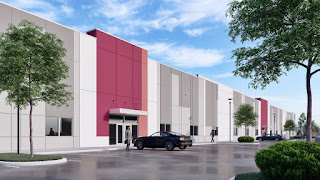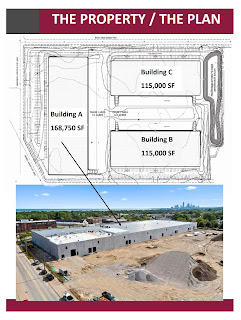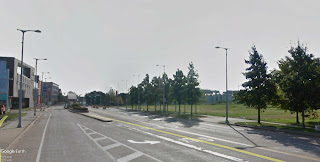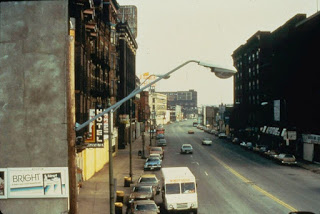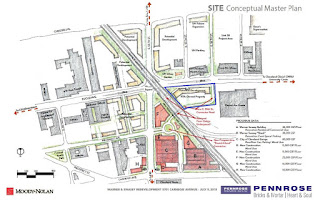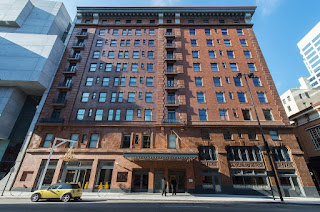Three sources confirm that e-commerce giant Amazon has agreed to occupy a large new warehouse on Cleveland's West Side and ultimately build out the rest of the site with more distribution facilities. The sources spoke off the record because they weren't authorized to speak publicly about the deal.
By the end of this year, Amazon will put at least 100 jobs into Madison Industrial Park with more jobs to follow. It will start by retrofitting and occupying a 168,750-square-foot building constructed last year at 10801 Madison Ave. Amazon will lease the building from developer and owner Weston Group. DiGeronimo Companies' Independence Construction was the building contractor.
One of the sources said this building will be used as warehouse for "returned deliveries with mostly straight trucks utilizing the facility." A straight truck is a vehicle in which all wheel axles are attached to a single frame. That's in contrast to a typically larger, articulated truck which has two or more connected separate frames such as for a cab and a trailer.
After Amazon moves in later this year, Weston and Independence will build for Amazon another large warehouse building or two to the south of the existing one. The original plan for the 21.6-acre Madison Industrial Park shows three buildings.
However, the same source said that another national company may be interested in one of the two as-yet-unbuilt buildings. The first building built on-site is the 168,750-square-foot warehouse that was completed in late-2019. Two more buildings, each measuring 115,000 square feet, are proposed next to and south of the first. Altogether, they would total nearly 400,000 square feet.
However, it isn't clear yet if that plan will be adhered to, or if Weston will seek to refine the plan through the city's Far West Design Review Committee to possibly combine the two proposed 115,000-square-foot buildings into one large one. If the plan is not refined, additional city reviews are not required to build out the site, one of the sources said.
One was the 248,000-square-foot Twinsburg Sortation Center that started with 150 jobs. The other was the 105,000-square-foot Euclid Logistics Center in Bluestone Industrial Park which began with about 100 employees. Aaustin Express and Titan Logistic Services, both Amazon contract delivery services, are also based in the same Bluestone II building in Euclid as Amazon.
The Twinsburg and Euclid Amazon facilities have reportedly increased their employment levels since they opened in 2016 and 2017 respectively, although definitive numbers are unavailable.
If those are indicative of what Amazon has in store for Madison Industrial Park, the first building could host at least 100 jobs at the outset. With additional growth and expansion of the site, employment could grow to 300-500 jobs in a couple of years, based on square footage and what has happened at other Amazon sites in Northeast Ohio.
Weston received in 2018 a 10-year property tax abatement from the city for the first building at 10801 Madison with an estimated construction cost of $10 million. Abatement applies only to the buildings, not the land.
In Weston's abatement application, it estimated the first building could accommodate at least 100 jobs and provide $1.4 million in property tax revenues for the Cleveland Metropolitan School District and nearly $900,000 in annual income tax revenue to the city.
In the last couple of years, Amazon opened in Greater Cleveland two of its largest type of distribution facilities -- Fulfillment Centers. One is an 855,000-square-foot facility employing 2,000 people on the site of the abandoned 650,000-square-foot Euclid Square Mall. The other is the 2.3-million-square-foot North Randall Fulfillment Center employing 2,500 people on the site of the old 2.2-million-square-foot Randall Park Mall.
 |
| By June 24, 2019, the first building at Madison Industrial Park began to take shape. This view looked generally east from the corner of Madison Avenue and West 106th Street (KJP). |
When informed that an agreement was reportedly signed Thursday (March 26), Mooney replied, "I hope it's true. It will benefit many businesses in the area. I do know that Amazon is the rumor and that Weston was still trying to negotiate with one or more people."
No one else is talking on the record yet about the Amazon's deal to locate at 10801 Madison. Messages and e-mails seeking comment were not returned prior to publication from several representatives of Weston and DiGeronimo.
One of the sources said Amazon business is growing so fast that the eCommerce giant immediately needed a modern warehouse on Cleveland's West Side with high overhead interior clearances. The new warehouse at 10801 Madison has 24 feet of clear height and 50-foot structural bays, according to Weston promotional materials.
Multiple additional warehouses in the Greater Cleveland area are also reportedly being considered by Amazon to augment its existing facilities, as well as to augment Madison Industrial Park. And Amazon recently announced hiring another 100,000 people nationwide including 4,600 new jobs in Ohio due to surging demand during the COVID-19 shutdown of bricks-and-mortar stores.
A Weston affiliate acquired the entire Madison Industrial Park site from the city of Cleveland in 2018 for $1.65 million after the city had spent $5.3 million in local, state and federal money to clean up pollutants left by the prior owner, Midland Steel Products. That auto parts company went bankrupt and closed in 2003, laying off 223 workers. The massive factory was demolished the following year.
END

